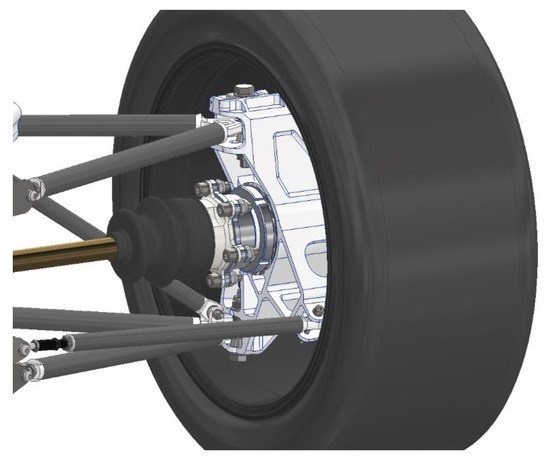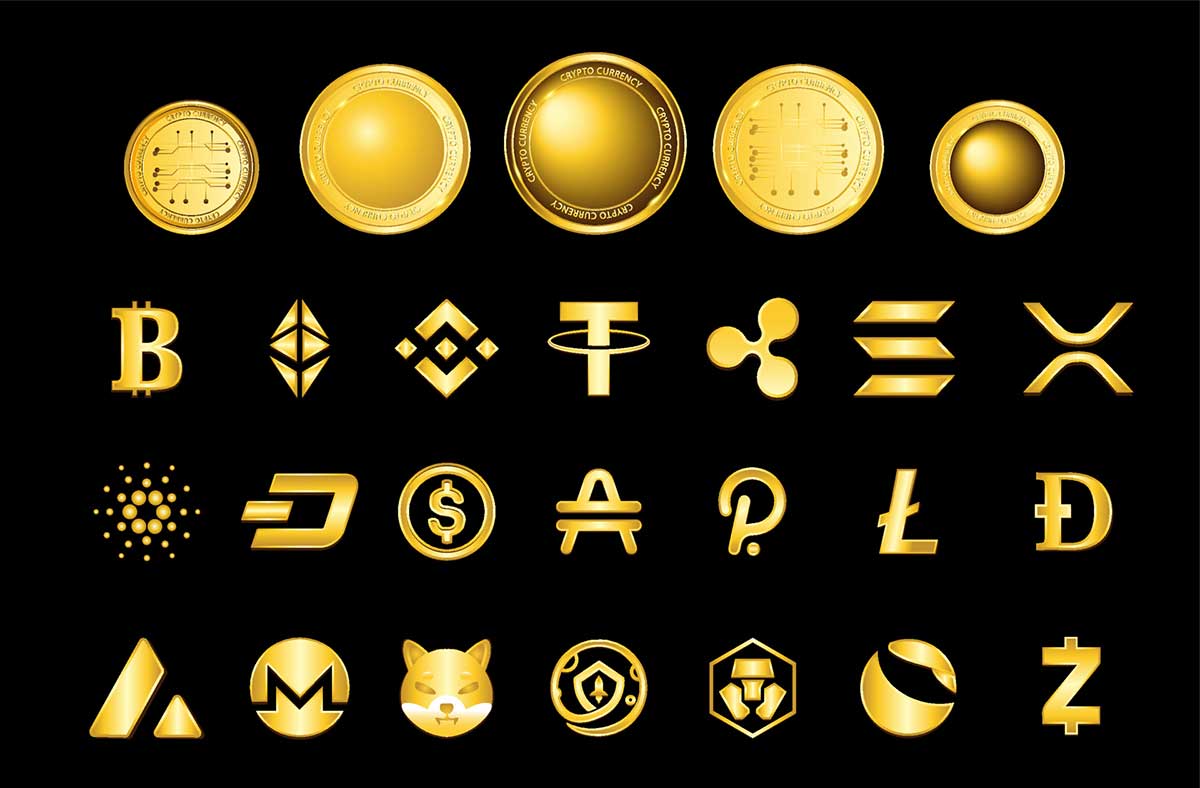What is Layer 2 Blockchain: A Comprehensive Overview.

A layer 2 blockchain is a secondary protocol built on top of an existing blockchain network that improves scalability and speed of transactions. As a result, it can handle a higher volume of transactions and reduce fees.
Layer 2 blockchains employ various solutions, such as state channels, sidechains, and plasma chains, to achieve their goals. By utilizing these solutions, layer 2 blockchains increase the network’s capacity, performance, and interoperability with other blockchains. With the growing popularity of blockchain networks, scalability and speed of transactions have become critical factors for user adoption.
Therefore, layer 2 solutions have emerged to address these issues. As blockchain technology continues to evolve, layer 2 protocols will play an increasingly crucial role in improving the performance and functionality of blockchain networks.

Credit: www.mdpi.com
Understanding The Basics Of Layer 2 Blockchain
Layer 2 blockchain technology is the latest buzz in the blockchain world, offering a more efficient and scalable solution to the scalability problem that arises in layer 1 blockchain. In this section, we will dive deep into layer 2 blockchain, focusing on the basics, differences between layer 2 and layer 1 blockchains, and the benefits of using layer 2 blockchain technology.
Introduction To The Layer 2 Blockchain Technology
Layer 2 blockchain technology, also known as off-chain scaling solutions, refers to the protocols built on top of layer 1 blockchain, aimed at offering a more efficient and scalable solution to the scalability problem associated with layer 1 blockchain. Layer 2 blockchain is built on top of the main layer 1 blockchain (such as bitcoin or ethereum) and can handle numerous transactions outside the main chain without affecting its performance.
The Difference Between Layer 2 And Layer 1 Blockchains
The primary difference between layer 2 and layer 1 blockchain is the number of transactions they can handle. Layer 1 blockchain has a limited capacity per second, which can cause slow transaction speeds and increased transaction fees. On the other hand, layer 2 blockchain offers the following key differences:
- Layer 2 blockchains allow a significant number of transactions per second without compromising the performance of layer 1 blockchain.
- Layer 2 blockchain is more cost-effective, reducing transaction fees and enabling microtransactions.
- Layer 2 blockchain offers more privacy and security.
Advantages Of Using Layer 2 Blockchain Technology
There are numerous benefits that come with using layer 2 blockchain technology, including:
- High scalability: Layer 2 blockchain increases the number of transactions per second, reducing congestion and transaction fees.
- Faster transaction speed: Layer 2 blockchain offers almost instant transaction confirmation, eliminating the need for long wait times.
- Cost-effective: Layer 2 blockchain reduces transaction fees, making it more accessible to ordinary users.
- Enhanced privacy: Layer 2 blockchain offers more privacy to users, reducing the risk of fraud and identity theft.
- Increased security: Layer 2 blockchain offers enhanced security to users, reducing the risk of hacking and theft.
- Compatibility with existing blockchain applications: Layer 2 blockchain technology is compatible with existing blockchain applications, enabling developers to create scalable and efficient applications.
To sum up, layer 2 blockchain technology is a game-changer that offers a more efficient and scalable solution to the scalability problem associated with layer 1 blockchain. It provides a significant number of advantages, including enhanced privacy, increased security, and cost-effectiveness, making it a preferred choice for developers looking to create scalable blockchain applications.
Types Of Layer 2 Blockchain Protocols
Layer 2 solutions are a way to increase the speed and scalability of blockchain networks, and the protocols used in these solutions aim to make blockchain technology more user-friendly and cost-effective. In this post, we will be discussing the four types of layer 2 blockchain protocols.
Payment Channel Networks Such As Lightning Network And Raiden Network
Payment channel networks or pcns are designed to reduce the cost and processing time of blockchain transactions. These protocols enable the creation of off-chain payment channels between two parties, allowing for multiple transactions to take place without the need for every block to be broadcasted and validated on the main blockchain.
Here are some key points about payment channel networks:
- The lightning network is the most widely used pcn for bitcoin blockchain, while raiden network is ethereum’s equivalent.
- In pcns, users can transact with each other without relying on third-party intermediaries or mining fees.
- These protocols can significantly increase the speed of transaction processing on the blockchain.
Sidechains Such As Liquid Network And Plasma
The second type of layer 2 blockchain protocol is the sidechain. Sidechains allow for the transfer of assets from one blockchain platform to another, which reduces the load on the main blockchain and increases its scalability while maintaining full security.
Here are some important points about sidechains:
- The liquid network is a popular sidechain for bitcoin, while plasma is ethereum’s sidechain protocol.
- These protocols rely on pegging, which allows assets to be transferred securely between two chains.
- They are useful when there is a need for fast and cheap transactions with reduced load on the main blockchain.
State Channels Such As Connext Network And Celer Network
State channels are similar to payment channel networks, but they are designed to handle smart contracts as well as asset transfers. In other words, state channels allow for more complex transactions to take place off-chain while still retaining the security and reliability of the blockchain.
Here are some points to remember about state channels:
- Connext network and celer network are popular state channel protocols for ethereum.
- In state channels, smart contracts can be executed off-chain, which reduces computational requirements on the blockchain.
- State channels provide faster transaction times and lower costs for complex and frequent transactions.
Rollups Such As Zk-Rollups And Optimistic Rollups
Rollup protocols are designed to increase scalability by bundling multiple transaction inputs into a single transaction output, reducing the load on the blockchain. They come in two types: zk-rollups and optimistic rollups, and each uses a different approach to bundling transactions.
Here are some points to remember about rollups:
- Zk-rollups use zero-knowledge proofs to bundle transactions securely while preserving privacy.
- Optimistic rollups do not use zero-knowledge proofs, but instead rely on optimistic assumptions that most transactions are valid.
- Rollup protocols are expected to significantly increase the throughput of blockchain transactions.
Layer 2 blockchain protocols are innovative solutions that increase the speed and scalability of blockchain networks. The protocols used in these solutions allow for faster and cheaper transactions, reduced load on the main blockchain, and improved scalability. These types of protocols are essential for the mainstream adoption of blockchain technology.
How Layer 2 Blockchain Addresses The Scalability Issue
Layer 1 of blockchain technology is the foundation of blockchain’s decentralized system. It is here that the transaction confirmation and verification of a blockchain occur. However, the major issue with this technology is its lack of scalability. With an increase in the number of users in a network, the time taken to confirm transactions increases, and so do the transaction fees.
Limitations Of Layer 1 Blockchain Technology In Terms Of Scalability
- Blockchains built on layer 1 technology operate slowly due to limited storage capacity and the complexity of executing smart contracts.
- As more nodes are added to the network, the speed of processing transactions slows down.
- In peak periods, when there is a high demand for transactions, blockchains can become extremely slow, with transaction fees increasing to discourage smaller payments.
Solutions Offered By Layer 2 Blockchain Technology To Address Scalability Issue
- Layer 2 blockchain technology is built on top of layer 1, offering a viable solution to scalability issues.
- With layer 2, transactions are processed more cheaply and quickly by allowing activities off-chained from the main blockchain, using channels for private transactions.
- Layer 2 blockchains reduce the number of interactions carried out on layer 1, thereby offering a more efficient and scalable solution.
- Off-chain scaling solutions enable a higher throughput, faster transaction finality, and lower fees due to reduced congestion in the main chain.
Examples Of How Layer 2 Blockchain Can Significantly Increase Transaction Speed And Volume
- Bitcoin’s lightning network operates as a layer 2 blockchain solution and enables faster and cheaper payments by bundling multiple transactions into one blockchain channel.
- Ethereum’s plasma scaling solution runs on top of ethereum allowing the scaling of decentralized applications in real-time
- Skale network enables developers to create their own blockchain network on top of ethereum to harness the benefits of fast and secure off-chain activities with layer 2 technology.
- Harmony’s cross-chain bridge technology enables communication between layer 2 blockchains for seamless transactions.
Layer 2 blockchain technology addresses many of the scalability issues associated with layer 1. By utilizing off-chain channels, specific blockchain solutions pave the way for faster, cheaper, and more efficient payment systems. These features make internal and person-to-person transactions much more manageable while allowing blockchains to scale at unprecedented levels.
Benefits Of Layer 2 Blockchain Technology
As the popularity of blockchain technology grows, there has been an increasing demand for faster and more efficient transaction processing. This is where layer 2 blockchain technology comes in. Here are some of its key benefits:
Lower Transaction Fees
One of the primary benefits of layer 2 blockchain technology is the lower transaction fees. By moving transactions off-chain, layer 2 solutions can significantly reduce transaction fees compared to performing every transaction on the main blockchain. This makes it an attractive option for users who want to transact frequently and pay fewer fees.
Some examples of layer 2 solutions that help to achieve this include the lightning network for bitcoin and raiden network for ethereum.
Increased Privacy And Anonymity
Another benefit of layer 2 blockchain technology is the increased privacy and anonymity it offers. By processing transactions off-chain, it reduces the visibility of these transactions on the main blockchain. This makes it more difficult for outsiders to trace a user’s transaction history, enhancing the user’s privacy and anonymity.
Examples of this include zk-rollups and optimistic rollups, which not only provide privacy and anonymity but also help to improve scalability.
Improved Security
Despite the increased privacy and anonymity that layer 2 solutions provide, they are also designed to improve security. By moving transactions off the main blockchain, users are protected from certain types of attacks that could be launched against the network.
Examples of this include the plasma framework and state channels that help to ensure that users’ funds are secure while still providing the scalability benefits of layer 2 solutions.
More Efficient Use Of Blockchain Resources
Finally, layer 2 blockchain technology offers more efficient use of blockchain resources. By moving transactions off-chain, it frees up capacity on the main blockchain, allowing it to process more transactions and speeding up the overall network. This also helps to reduce network congestion, which can lead to faster transaction times and a better user experience.
Some examples of this include sharding and sidechains that help to improve scalability while still maintaining the security and decentralization of the main blockchain.
Layer 2 blockchain technology offers a range of benefits that help to improve the scalability, privacy, security, and efficiency of the blockchain network. By leveraging these solutions, users can enjoy faster transaction processing, lower fees, and increased privacy and anonymity, making it an attractive option for those who want to transact frequently while still maintaining the security and decentralization of the blockchain network.
Potential Future Developments Of Layer 2 Blockchain
Layer 2 blockchain, also known as off-chain solutions, aims to address bitcoin’s traffic congestion and slow transaction processing time. It offers a compelling alternative to the base layer of the blockchain, enabling faster transactions and increased scalability. Layer 2 blockchain protocols include plasma, lightning network, state channels, and sidechains, each with their unique approach and implementation.
Possible Developments In Layer 2 Blockchain Protocol
Layer 2 blockchain protocol has several potential developments:
- Multi-layer capabilities to enhance scalability
- Improvement in privacy features
- Cross-chain capabilities to enable seamless transfers across multiple blockchains
- Decentralized app (dapp) integration for diverse use cases
Predictions On The Future Of Layer 2 Blockchain In The Blockchain Ecosystem
The widespread adoption of layer 2 blockchain as a scaling solution has gained momentum in recent years. With the increasing adoption of decentralized finance (defi) and non-fungible tokens (nfts), layer 2 blockchain’s potential seems promising. Future predictions for layer 2 blockchain in the blockchain ecosystem include:
- Improvement of interoperability among blockchains
- Emergence of third-party providers of layer 2 solutions for increased enterprise adoption
- Development of new use cases that can leverage the high-speed transactions and scalability of layer 2 blockchain
Potential For Layer 2 Blockchain To Revolutionize The Way Blockchain Is Used In Industries
Layer 2 blockchain will disrupt traditional industries by enabling faster and low-cost transactions, increased security, and improved privacy features. Its potential for revolutionizing the way blockchain is used in industries is vast. Some potential use cases include:
- Decentralized storage solutions
- Increased adoption of stablecoins for everyday transactions
- Reduced costs and increased efficiency in supply chain management
Layer 2 blockchain’s potential for scalability, faster transactions, and improved security positions it as a promising scaling solution in the blockchain ecosystem. With possible developments and future predictions, it is clear that layer 2 blockchain has a long way to go toward unlocking its full potential.
Frequently Asked Questions Of What Is Layer 2 Blockchain
What Is A Layer 2 Blockchain Network?
A layer 2 blockchain network is a secondary protocol built on top of the primary blockchain, allowing it to process more transactions and reduce congestion.
How Does Layer 2 Blockchain Work?
Layer 2 blockchain is designed to scale the original blockchain, allowing for an increase in transaction speed and network efficiency. This is done by offloading some of the transaction processing onto secondary protocols like side chains or payment channels.
What Are The Benefits Of Layer 2 Blockchain?
The benefits of layer 2 blockchain include increased scalability, faster transaction times, lower fees, and improved network security. Additionally, layer 2 solutions allow for the creation of decentralized applications on top of existing blockchains.
What Are The Disadvantages Of Layer 2 Blockchain?
While layer 2 blockchain offers many benefits, it also presents some challenges. There is a greater risk of centralization, and not all layer 2 solutions are compatible with existing blockchain protocols. Additionally, layer 2 networks are subject to their own potential vulnerabilities and security risks.
How Does Layer 2 Blockchain Differ From Layer 1?
The main difference between layer 1 and layer 2 is that layer 1 focuses on the base layer infrastructure, while layer 2 is more concerned with scalability and transaction speed. Layer 2 builds on top of layer 1 to enhance the blockchain’s performance and capabilities.
Conclusion
After understanding the workings of the layer 2 protocol, it becomes clear that it is essential in facilitating blockchain scalability and improving transaction speeds. With the ever-growing demand for blockchain technology, solutions that can solve its speed limitations are highly sought after.
Layer 2 is one of those solutions. Its ability to operate at a higher level of abstraction while relying on the security of the underlying blockchain makes it highly efficient. Furthermore, it allows for more complex smart contracts and dapps, thus expanding the possibilities of blockchain usage cases.
Layer 2 blockchain promises to bring a revolution to the blockchain industry, and it is crucial for stakeholders and investors to stay informed about its developments. Blockchain has the potential to revolutionize industries by bringing decentralization, and layer 2 blockchain makes it all more possible.







